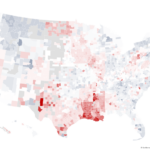Top teams aren’t confused about what to watch. They run a tight cadence around a short list of real estate operating metrics that predict revenue, protect margin, and expose capacity constraints before they become hiring or cash problems. If your weekly meeting isn’t anchored to these numbers, you’re flying on opinions, not operating discipline.
This isn’t about vanity dashboards. It’s about a non-negotiable scorecard that aligns producers, marketing, and operations to a single objective: profitable, durable growth. Below are the six real estate operating metrics we require leaders to review weekly across high-performing teams and brokerages inside RE Luxe Leaders® (RELL™).
1) Pipeline Coverage and Stage Conversion
Objective: ensure forward revenue visibility and diagnose friction by stage. Every core market and team segment should maintain 3–4x coverage against a 90-day target. Track how opportunities progress from inquiry to appointment to agreement to contract, with conversion rates by source and by agent.
Why it matters: pipeline coverage without stage conversion clarity is false security. Forecasts built on linear assumptions routinely miss; what improves accuracy is stage-by-stage probability grounded in observed conversion. Harvard Business Review shows that structured, probability-based forecasting outperforms rep-committed guesses by removing bias and anchoring to measurable stage behavior (A Better Way to Forecast Sales).
Directive: set a standard weekly view—coverage vs. target, conversion by stage, and aging by stage. If coverage dips below 3x or stage aging exceeds your SLA (e.g., 7 days in nurture without movement), mandate a tactical plan within 24 hours: source-level adjustments, messaging changes, or reassignments.
2) Set-to-Held and Held-to-Signed Rates
Objective: measure the integrity of top-of-funnel and the effectiveness of the consult itself. Track the percentage of set appointments that hold, and the percentage of held appointments that convert to signed listing/representation agreements. Cut this by lead source and by agent.
Why it matters: appointment volume can be bought; quality and execution cannot. High set-to-held with low held-to-signed signals a consult problem. Low set-to-held points to poor qualification or sloppy confirmation processes. This metric pair isolates whether the issue is marketing qualification, ISA scripting, calendar discipline, or agent consult skill.
Directive: define redlines. Example: set-to-held below 70% or held-to-signed below 35% triggers coaching, talk track revision, or reallocation of leads. Publish leaderboards weekly and pair underperforming agents with your best consult operators for targeted drill work.
3) Listing Acquisition Velocity and Cycle Time
Objective: quantify the pace of adding sell-side inventory and the time to secure signatures. Track new signed listings per week per agent and the lead-to-signed cycle time (first contact to executed agreement).
Why it matters: listing flow is the flywheel of team economics—marketing leverage, brand compounding, and pipeline stability all improve when listing velocity is steady. Extended cycles signal proposal friction (pricing misalignment, weak pre-list process, or delays in decision-making). Faster cycles correlate with tighter pre-list packages, stronger social proof, and price strategy confidence.
Directive: define velocity targets per seat based on market share and seasonality. Inspect cycle time outliers weekly. If cycle time extends two consecutive weeks, audit pre-list materials and the pricing conversation. Deploy a standard pre-list readiness checklist and require agents to send it 24 hours ahead of the appointment.
4) Contract Cycle Time and Fall-Through Rate
Objective: measure speed and reliability of revenue realization. Track days from agreement to executed contract, and from contract to close. Pair this with fall-through rate (contracts that do not close), by agent and by source.
Why it matters: long cycles and high fall-through consume staff capacity, inflate carrying costs, and wreak havoc on cash planning. Pinpoint where delays originate: inspection handling, financing, title, or communication gaps. Cycle-time discipline isn’t a luxury—it is an operating necessity for stable cash conversion in a commission-driven business.
Directive: set SLA expectations by milestone (offer response within 2 hours, repair addendum within 24 hours, weekly client status updates). Publish a simple funnel for every contract in play with next action and owner. When fall-through rate rises above your 12-month average, run a post-mortem on the last 10 lost contracts and implement one process fix per root cause.
5) Price Strategy Adherence and Variance
Objective: track how well listings launch against strategy and how quickly you correct when the market speaks. Monitor original list-price-to-strategy variance at launch and time-to-price-adjustment half-life (days from launch to first price move), correlated with DOM and concessions.
Why it matters: price is the most powerful lever you control, and pricing discipline is directly tied to margin quality. McKinsey’s research consistently shows small pricing improvements drive outsized profit impact across industries (The Power of Pricing: How to Make Prices Work for You). In residential, mispricing burns days-on-market, stigmatizes the asset, and drives net proceeds down.
Directive: enforce a launch tolerance (e.g., within 1% of strategy) and a price-change SLA based on traffic and inquiry triggers. If showings per week fall below threshold for two weeks, a price review meeting is mandatory. Publish variance data by agent monthly; low-variance agents should lead peer review of pricing narratives.
6) Contribution Margin by Agent and Channel
Objective: know where profit is actually created. Measure contribution margin at the agent level and by acquisition channel after splits, referral fees, marketing costs, and transaction ops. Include both gross commission income and fully loaded lead costs.
Why it matters: volume can hide weak economics. Without contribution margin views, teams over-invest in channels that look productive but destroy margin after costs. This is the metric that prevents you from scaling loss-making activities. It also exposes compensation misalignments and where ops efficiency gains will yield real dollars.
Directive: standardize cost attribution weekly. If a channel shows negative or sub-target margin for three consecutive weeks, place it on probation with a clear hypothesis to fix or exit. Publish agent-level margin dashboards to leadership only; coach privately, adjust publicly through compensation plan design—not through ad hoc exceptions.
How to Run the Cadence
Weekly reviews must be short, visual, and decisive. Limit the scorecard to these six real estate operating metrics, cut by agent and by source where it changes decisions. Anything that doesn’t drive action is noise. For teams that need a starting point or want an independent operating audit, work with RE Luxe Leaders® to install a disciplined leadership rhythm and RELL™ reporting pack tailored to your model.
Implementation Notes
Data integrity beats dashboard aesthetics. Define each metric precisely, lock the calculations, and protect the input sources. Document SLAs tied to thresholds; the meeting is where you decide, not where you debate math. If you can’t trust the numbers, fix that first. As A Better Way to Forecast Sales underscores, forecast accuracy comes from method and measurement, not optimism.
Conclusion
Elite teams don’t ask for more leads; they build operating systems that convert consistently and protect margin across cycles. Anchor your weekly leadership meeting to these six real estate operating metrics. You’ll see earlier, decide faster, and compound advantages that competitors misread as “market luck.” That’s not luck. It’s leadership.





